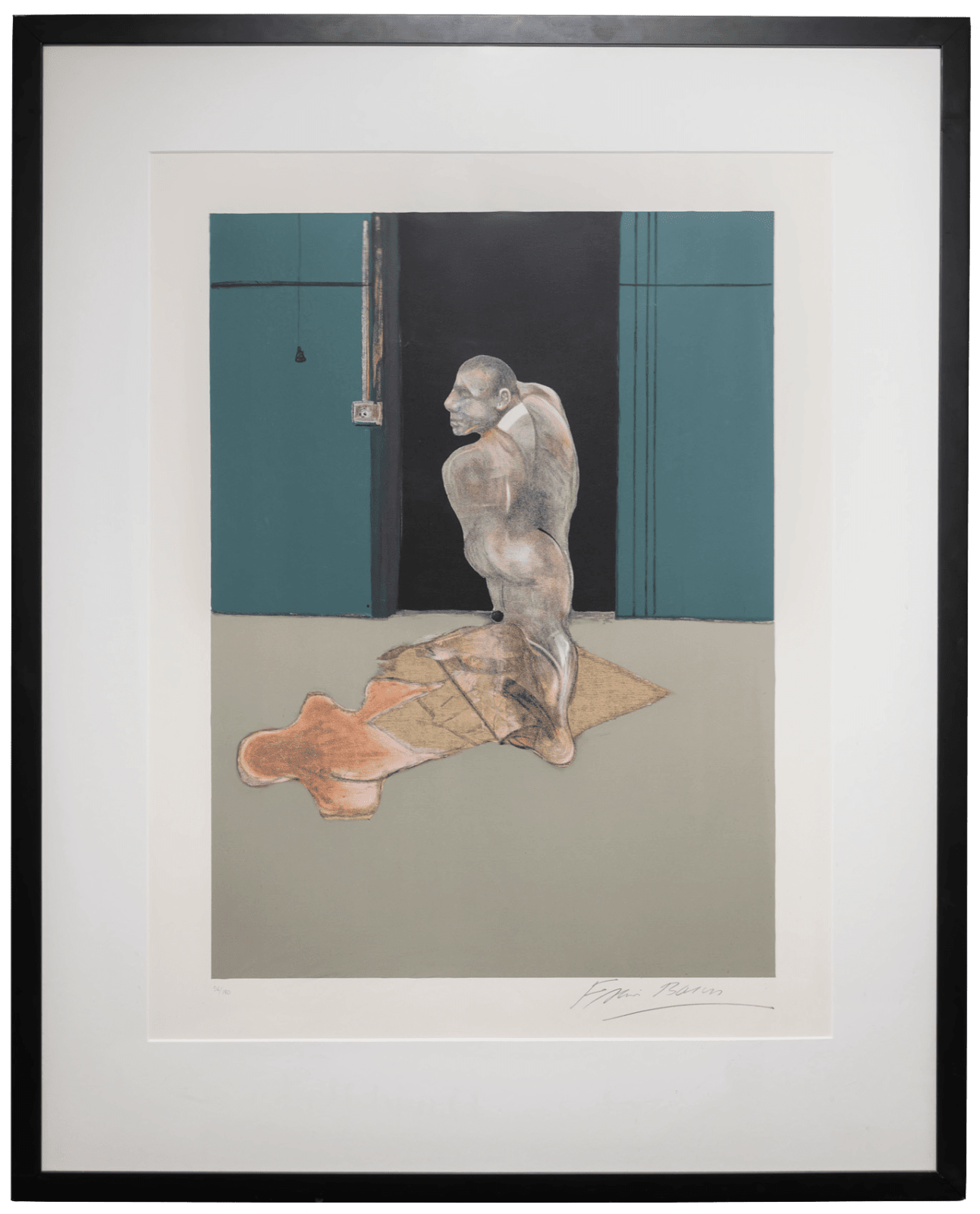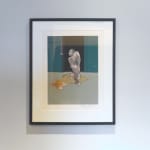Francis Bacon British, 1909-1992
Study for a portrait of John Edwards, 1986
Original lithograph in colours on Arches paper, with full margins, framed
Signed by the artist in pencil, lower right on recto
Signed by the artist in pencil, lower right on recto
Image: 68 x 49 cm
Sheet: 94.5 x 67.9 cm
Framed: 105.3 x 85.4 cm
Sheet: 94.5 x 67.9 cm
Framed: 105.3 x 85.4 cm
© Estate of Francis Bacon
'Study for a Portrait of John Edwards' by Francis Bacon provides a profound exploration of the human condition and a personal depiction of his significant relationship with John Edwards. Bacon...
'Study for a Portrait of John Edwards' by Francis Bacon provides a profound exploration of the human condition and a personal depiction of his significant relationship with John Edwards. Bacon met Edwards in 1974 and soon became one of the artist's closest and most trusted companions.
The artwork portrays Edwards as a nude figure framed by architectural elements, set in a post-war atmosphere. Before a dark doorway stands the male figure that appears to be cut and pasted onto the space as if it was a collage. The subject's shadow on the ground is almost as tangible as the figure. One can also see that Bacon has marked a rectangular shape on the floor on which to place the figure. It suggests that the figure might disappear through the door's opening into nothingness.
Here, Edwards' three-quarter-turn and muscular body is articulated in Bacon's meticulous observation evinced by the delicate blending of tones and the intense application of detail on Edwards' facial features. By this time in his practice, Bacon was working exclusively from photographs and memory, with Edwards taking photographs on his behalf. This approach allowed Bacon to merge photographic references with his imagination and memories, eliminating the need to paint from life.
'Study for a Portrait of John Edwards' represents the final chapter of Bacon's life, consolidating his distinctive style and ability to convey the complexities of the human condition. Bacon merges his artistic vision with his bond to Edwards through this work, resulting in an intimate and evocative portrayal. It stands as a testament to Bacon's artistic mastery and ability to capture the essence of humanity.
The artwork portrays Edwards as a nude figure framed by architectural elements, set in a post-war atmosphere. Before a dark doorway stands the male figure that appears to be cut and pasted onto the space as if it was a collage. The subject's shadow on the ground is almost as tangible as the figure. One can also see that Bacon has marked a rectangular shape on the floor on which to place the figure. It suggests that the figure might disappear through the door's opening into nothingness.
Here, Edwards' three-quarter-turn and muscular body is articulated in Bacon's meticulous observation evinced by the delicate blending of tones and the intense application of detail on Edwards' facial features. By this time in his practice, Bacon was working exclusively from photographs and memory, with Edwards taking photographs on his behalf. This approach allowed Bacon to merge photographic references with his imagination and memories, eliminating the need to paint from life.
'Study for a Portrait of John Edwards' represents the final chapter of Bacon's life, consolidating his distinctive style and ability to convey the complexities of the human condition. Bacon merges his artistic vision with his bond to Edwards through this work, resulting in an intimate and evocative portrayal. It stands as a testament to Bacon's artistic mastery and ability to capture the essence of humanity.
Literature
Francis Bacon: Estampes - collection Alexandre Tacos, no. 23Bruno Sabatier, Francis Bacon: The Graphic Work, no. 22






